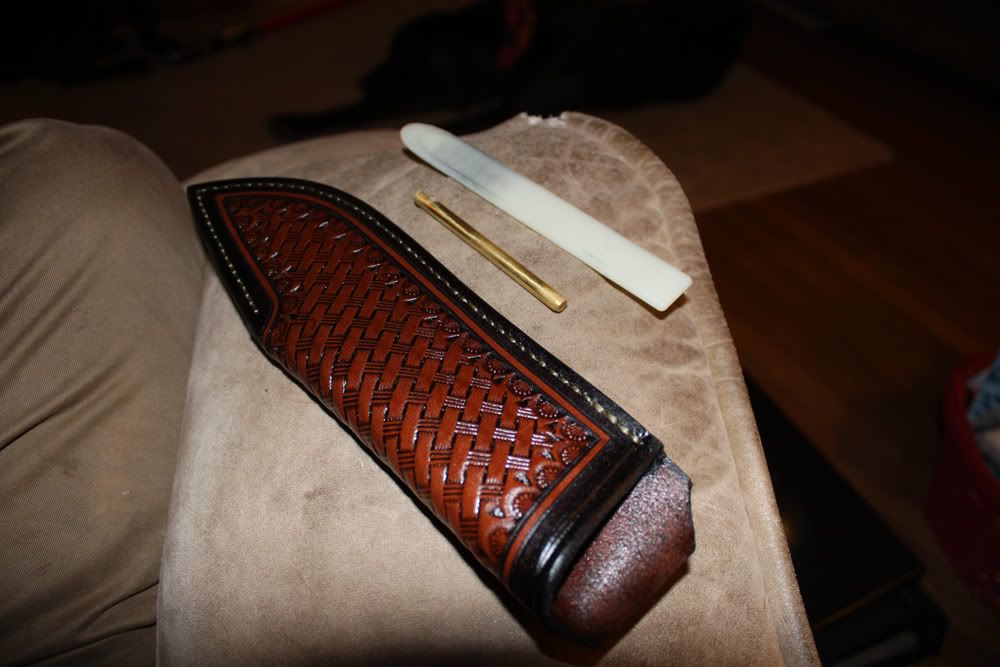- Joined
- Jan 6, 2005
- Messages
- 9,680
Use a larger needle (same size as your drill bit). Just a suggestion. If you are happy with your system, keep at it.... the work speaks for itself, bro!
The BladeForums.com 2024 Traditional Knife is available! Price is $250 ea (shipped within CONUS).
Order here: https://www.bladeforums.com/help/2024-traditional/
It holds up well. The leather remains fairly stiff, but I have not had any problems with it cracking.
Here it is getting ready to slick the edge. It is a plastic slicker and a piece of brass rod. It works well, I make sure I round the edges as much as I can.


Now I am done... Here it is.


What do you think?
Hope it was helpful.
Matt
Matt, what size needle/drill bit do you use? I use a 1/16th bit but still have to use pliers to pull the thread through. Not sure what size needles I'm using, but they're some of the smaller ones the Tandy store had and they come in a 10 pk.
Next time I'm in there, I think I'll pick up some larger needles and give Rick's technique a try. You're right, having to pull the needles through on every stitch is a b....bear.
Rick, please be sure to show some of your work.
Paul
Whew... I thought for sure I managed to tick off one of the good guys for a minute there, Paul. I totally understand your reasoning behind not liking the rivets. I couldn't get away from it performance wise, though. But being mindful of the blade finish is one of the reasons why I switched to copper. Like Matt, I have never had an issue with a recessed rivet.... but we are comparing my 5-6yrs to your 60yrs experience.
